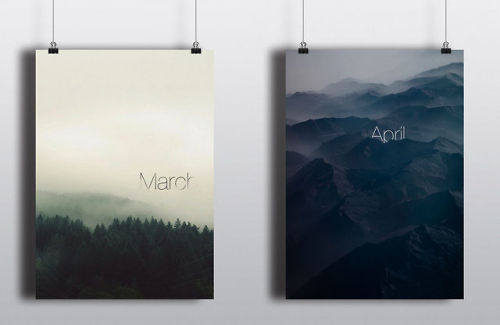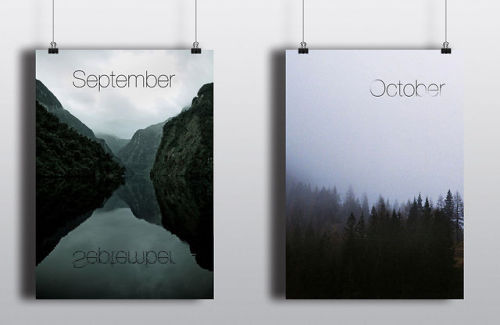Hubble’s Jupiter Maps Reveals Weird Structures


Hubble’s Jupiter Maps Reveals Weird Structures
Over a 10 hour period, the Hubble Space Telescope gazed at the solar system’s largest planet to produce one of the most spectacular maps of Jupiter’s complex and dynamic atmosphere. Immediately astronomers were able to measure the size of the planet’s shrinking Great Red Spot and notice some mysterious structures along the way.
As the spot has shrunk, it’s color has also become more anemic, losing some of its redness. Also, as these new Hubble observations show, a strange wispy structure has formed inside the storm, becoming warped by the high-speed winds that have been clocked at a speed of 540 kilometers (335 miles) per hour. Astronomers, so far, have little explanation as to what this feature is or what caused it.
Another oddity has been spied just north of the planet’s equator — a wave-like structure has formed, something that hasn’t been seen since the Voyager 2 flyby in 1979. During that flyby, these waves were assumed to be a transient event and the fact the spacecraft imaged them was a fluke. But they’ve now returned, no doubt sparking some huge interest as to their origins.
Click to learn more
More Posts from Inter-stellxr-blog and Others

Meteorite Shower Over McCloud Falls, California
js

Scientists spot the closest Earth-sized exoplanet yet
Scientists have discovered a new exoplanet that, in the language of “Star Wars,” would be the polar opposite of frigid Hoth, and even more inhospitable than the deserts of Tatooine. But instead of residing in a galaxy far, far away, this new world is, galactically speaking, practically next door. The new planet, named GJ 1132b, is Earth-sized and rocky, orbiting a small star located a mere 39 light-years from Earth, making it the closest Earth-sized exoplanet yet discovered. Based on their measurements, the scientists have determined that the planet is a roasting 500° F (260° C), and it is likely tidally locked, meaning that it has a permanent day and night side — presenting the same face to its star, much like our Moon is locked to Earth.
Read more ~ Astronomy Magazine
Image: In this artist’s rendering of GJ 1132b, a rocky exoplanet similar to Earth in size and mass, circles a red dwarf star. GJ 1132b is relatively cool at about 450° F (230° C) and could potentially host an atmosphere. At a distance of only 39 light-years, it will be a prime target for additional study with Hubble and future observatories like the Giant Magellan Telescope. Credit: Dana Berry

NASA Astronomy Picture of the Day 2015 September 5
Atlas V Rising
Early morning risers along Florida’s Space Coast, planet Earth, were treated to a launch spectacle on September 2nd. Before dawn an Atlas V rocket rose into still dark skies carrying a US Navy communications satellite from Cape Canaveral Air Force Station into Earth orbit. This minutes long exposure follows the rocket’s arc climbing eastward over the Atlantic. As the rocket rises above Earth’s shadow, its fiery trail becomes an eerie, noctilucent exhaust plume glinting in sunlight. Of course, the short, bright startrail just above the cloud bank is Venus rising, now appearing in planet Earth’s skies as the brilliant morning star.






@rasinblazin

For more amazing images and posts about how Astronomy is Awesome, check us out!
http://astronomyisawesome.com/
As always, please feel free to ask questions and we love it when you reblog!
#astronomy #space #nasa #hubble space telescope #nebula #nebulae #galaxy

Wind farm star trails by Matt James
Ten Awe-Inspiring Photos
We’ve taken 10 of our top Instagram posts and put them here for your viewing pleasure. Now, your next 10 cell phone backgrounds can be found in one place.
10. Water on Mars

With 210,000 likes, this image is a favorite on Instagram. New findings from our Mars Reconnaissance Orbiter (MRO) provide the strongest evidence yet that liquid water flows intermittently on present-day Mars. Dark, narrow streaks on Martian slopes such as these at Hale Crater are inferred to be formed by seasonal flow of water on contemporary Mars. The streaks are roughly the length of a football field.
9. Smoke Ring for a Halo

With 210,000 likes, this image shined on Instagram. Two stars shine through the center of a ring of cascading dust in this image taken by the Hubble Space Telescope. The star system is named DI Cha, and while only two stars are apparent, it is actually a quadruple system containing two sets of binary stars. As this is a relatively young star system it is surrounded by dust.
8. Pluto’s Largest Moon, Charon

With 216,000 likes, a lot of people thought this image was interesting on Instagram. Our New Horizons spacecraft has returned the best color and the highest resolution images yet of Pluto’s largest moon, Charon - and these pictures show a surprisingly complex and violent history. This high-resolution enhanced color view of Charon was captured just before closest approach on July 14. The image combines blue, red and infrared images; the colors are processed to best highlight the variation of surface properties across Charon.
7. Veil Nebula

With 220,000 likes, many people favorited this image on Instagram. This is the expanding remains of a massive star that exploded about 8,000 years ago. This view is a mosaic of six pictures from our Hubble Space Telescope of a small area roughly two light-years across, covering only a tiny fraction of the nebula’s vast structure. This close-up look unveils wisps of gas, which are all that remain of what was once a star 20 times more massive than our sun.
6. Messier 94 Galaxy

With 234,000 likes, this image is a favorite on Instagram. This image shows the galaxy Messier 94, which lies in the small northern constellation of the Hunting Dogs, about 16 million light-years away. Within the bright ring or starburst ring around Messier 94, new stars are forming at a high rate and many young, bright stars are present within it.
5. Solar ‘Pumpkin’

With 247,000 likes, many followers enjoyed this image on Instagram. This photo was posted on Halloween and shows active regions on the sun combined to look something like a jack-o-lantern’s face. The image was captured by NASA’s Solar Dynamics Observatory in October 2014, which watches the sun at all times from its orbit in space.
4. Italy from the International Space Station

With 251,000 likes, this image captivated many of you on Instagram. Before drifting off to sleep, NASA astronaut Scott Kelly (@stationcdrkelly) captured this images from the International Space Station and wrote, “ Day 180. Moonlight over Italy. #BuonaNotte Good night from @ISS! #YearInSpace.”
3. Cosmic Archaeological Dig

With 286,000 likes, this image dazzled many of you on Instagram. Peering deep into the Milky Way’s crowded central hub of stars, researchers using our Hubble Space Telescope have uncovered for the first time a population of ancient white dwarfs – smoldering remnants of once-vibrant stars that inhabited the core. Finding these relics at last can yield clues to how our galaxy was built, long before Earth and our sun formed. This image is a small section of Hubble’s view of the dense collection of stars crammed together in the galactic bulge.
2. Super Blood Moon

With 310,000 likes, this image was very popular on Instagram. It shows the Super Blood Moon behind the Washington Monument on Sunday, Sept. 27, in Washington, DC. The combination of a supermoon and total lunar eclipse last occurred in 1982 and will not happen again until 2033.
1. Pluto

With 363,000 likes, this image is one of our most popular pictures on Instagram. The dwarf planet sent a love note back to Earth via our New Horizons spacecraft, which traveled more than 9 years and 3+ billion miles. This was the last and most detailed image of Pluto sent to Earth before the moment of closest approach, which was at 7:49 a.m. EDT Tuesday, July 14 - about 7,750 miles above the surface – roughly the same distance from New York to Mumbai, India - making it the first-ever space mission to explore a world so far from Earth.
For more pictures like these, follow us on Instagram: https://www.instagram.com/nasa/
Make sure to follow us on Tumblr for your regular dose of space: http://nasa.tumblr.com
-
 kmm07 liked this · 2 years ago
kmm07 liked this · 2 years ago -
 ourbillo liked this · 2 years ago
ourbillo liked this · 2 years ago -
 jdvr1983 reblogged this · 5 years ago
jdvr1983 reblogged this · 5 years ago -
 goldlipstick liked this · 5 years ago
goldlipstick liked this · 5 years ago -
 ocean-gum liked this · 5 years ago
ocean-gum liked this · 5 years ago -
 beetleboneyard reblogged this · 6 years ago
beetleboneyard reblogged this · 6 years ago -
 ablinamiscia liked this · 7 years ago
ablinamiscia liked this · 7 years ago -
 coolest-potato-on-the-block-blog liked this · 7 years ago
coolest-potato-on-the-block-blog liked this · 7 years ago -
 mibale reblogged this · 8 years ago
mibale reblogged this · 8 years ago -
 el-consiliarius liked this · 8 years ago
el-consiliarius liked this · 8 years ago -
 smallestspacenerd liked this · 8 years ago
smallestspacenerd liked this · 8 years ago -
 nibenhutracycas liked this · 8 years ago
nibenhutracycas liked this · 8 years ago -
 sleepydragoninc reblogged this · 8 years ago
sleepydragoninc reblogged this · 8 years ago -
 tenjounotora reblogged this · 8 years ago
tenjounotora reblogged this · 8 years ago -
 tenjounotora liked this · 8 years ago
tenjounotora liked this · 8 years ago -
 vikapediathat liked this · 8 years ago
vikapediathat liked this · 8 years ago -
 navigatorsnorth reblogged this · 8 years ago
navigatorsnorth reblogged this · 8 years ago -
 ivadan reblogged this · 8 years ago
ivadan reblogged this · 8 years ago -
 ivadan liked this · 8 years ago
ivadan liked this · 8 years ago -
 nopedesg reblogged this · 8 years ago
nopedesg reblogged this · 8 years ago -
 nopedesg liked this · 8 years ago
nopedesg liked this · 8 years ago -
 whypolar liked this · 8 years ago
whypolar liked this · 8 years ago -
 comics-and-knowledge reblogged this · 8 years ago
comics-and-knowledge reblogged this · 8 years ago -
 pattiromo liked this · 8 years ago
pattiromo liked this · 8 years ago -
 ptolemaeic reblogged this · 8 years ago
ptolemaeic reblogged this · 8 years ago -
 amas1982-blog reblogged this · 8 years ago
amas1982-blog reblogged this · 8 years ago -
 xn--ps8hn1f reblogged this · 8 years ago
xn--ps8hn1f reblogged this · 8 years ago -
 j-lle reblogged this · 8 years ago
j-lle reblogged this · 8 years ago -
 lowkeyfairy liked this · 8 years ago
lowkeyfairy liked this · 8 years ago -
 bereest93-blog liked this · 8 years ago
bereest93-blog liked this · 8 years ago -
 neonzilla liked this · 8 years ago
neonzilla liked this · 8 years ago -
 gingersnappe liked this · 8 years ago
gingersnappe liked this · 8 years ago -
 leastfavmutual reblogged this · 8 years ago
leastfavmutual reblogged this · 8 years ago -
 weneedthebiggestdrill reblogged this · 8 years ago
weneedthebiggestdrill reblogged this · 8 years ago -
 sciencesara reblogged this · 8 years ago
sciencesara reblogged this · 8 years ago -
 bestnatphotos reblogged this · 8 years ago
bestnatphotos reblogged this · 8 years ago -
 dessedence reblogged this · 8 years ago
dessedence reblogged this · 8 years ago -
 firesighn reblogged this · 8 years ago
firesighn reblogged this · 8 years ago -
 greywolfheirs reblogged this · 8 years ago
greywolfheirs reblogged this · 8 years ago -
 xzxzxzxzxzxzxz reblogged this · 8 years ago
xzxzxzxzxzxzxz reblogged this · 8 years ago -
 shippingtech-blog reblogged this · 8 years ago
shippingtech-blog reblogged this · 8 years ago -
 tanelteemusk reblogged this · 9 years ago
tanelteemusk reblogged this · 9 years ago -
 retardedlion liked this · 9 years ago
retardedlion liked this · 9 years ago
"I don't know who will read this. I guess someone will find it eventually. Maybe in a hundred years or so." -Mark Watney
174 posts

